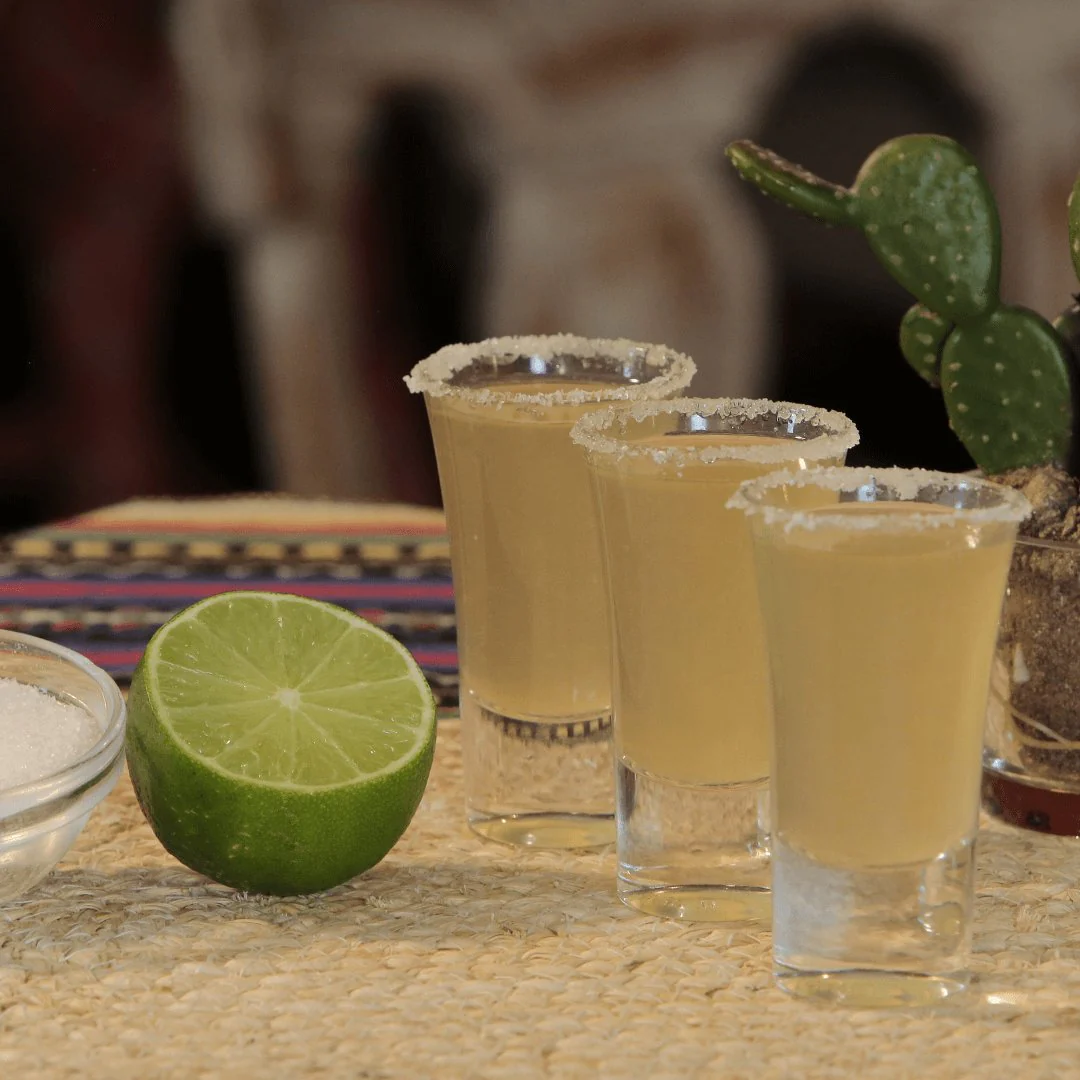
Tequila 101
Liquid gold
In order for a spirit to be called “Tequila” it has to come from one of the five states in Mexico: Guanajuato, Jalisco, Michoacan, Nayarit or Tamaulipas. Most (read 90%) come from the state of Jalisco, home to the actual town of Tequila.
Tequila is distilled from the Weber blue agave plant. The most important part of the plant is the piña - the heart. The piña is the part of the plant that remains after the large spikes are removed from the agave.
The first official license to commercially produce Tequila was issued to the Cuervo family in the 1700s by King Carlos IV of Spain. Today, Jose Cuervo is still one of the most popular Tequila’s around. Premium Tequila’s are made from 100% blue agave (as per legislation) with the remaining made from molasses, corn syrup or other sugars. Any other spirit made from the agave plant is called either an Agave Spirit or Mezcal. Just as tequila must come from one of five states to be considered tequila, mezcal can come from either of the following: San Luis Potosi, Michoacan, Jalisco, Durango, Morelos, Nuevo Leon, Oaxaca, Tamaulipas or Zacatecas to be true mezcal.
Everyone is always focussed on the alcohol content so let’s get into it. In South Africa, Tequila is bottled at 43%, in the US 40% and Europe 37.5%. Regulations in Mexico permit Tequila bottled at 35-55% ABV.
The production of Tequila
As mentioned, Tequila is made from ripe blue agave plants which take a minimum of 6 years to mature and may take as long as 12 to be usable for Tequila production.
Jimadors are the skilled harvesters that work with the blue agave plant. Once the agave is mature, the Jimador removes the outer leaves to reveal the piña - the part needed to produce Tequila. The piña’s are slow roasted in traditional ovens 24-48 hours or steamed in autoclaves for 7 hours (way faster).
The “cooking” process converts the starches into fermentable sugars. The piña’s are pressed and shredded to release a sugary liquid. This liquid is placed in fermentation tanks where yeast is added. Fermentation happens for up to 96 hours with a resultant liquid containing 6% alcohol content. Distillation of this 6% ABV liquid needs to happen at least twice to produce alcohol with a proof between 70 and 110 - this is what we know as Tequila blanco.
Types of Tequila
Blanco - clear spirit. Unaged. Bottled directly after distillation and often used in cocktails.
Reposado - light gold. Rested. Must be aged in oak barrels for 2-12 months.
Anejo - bright gold. Must be aged in oak barrels for between 1-3 years.
Extra Anejo - dark gold. Must be aged at least three years in oak barrels. Generally smoky in flavour.
The type of cask, wood type, temperature and humidity are all factors that determine the outcome of how Tequila matures and as a result, the flavour.
Tequila's to try
We've put together a list of Tequila's to try - they're the top Tequila's in their categories according to our customers.
Blanco

Jose Cuervo Silver is made using the same process as the gold, but without the aging in oak barrels. This gives it a distinct, crisp Agave flavour, and makes it the ultimate mixing tequila, best served as a classic Margarita or in a long drink.



Reposado

Aged for eight months in American white-oak barrels, Don Julio Reposado Tequila is golden amber in color, and offers a rich, smooth finish.
With a mellow, elegant flavor and inviting aroma, Don Julio Reposado Tequila is best savored as part of a refreshing tasting drink or chilled on the rocks.

Made with 100% Weber Blue Agave and bottles individually sculpted and hand-painted, each and every bottle of Clase Azul truly is a one-of-a-kind piece of art.
Masterfully aged for eight months in bourbon barrels, this exceptionally smooth tequila is recognized worldwide as one of the best reposados.
 Altos Reposado tequila is made from 100% blue agave grown in the highlands of Jalisco, Mexico and aged in former whiskey barrels for 6 to 8 months for good measure. Sweet and citric with notes of vanilla and wood, it's definitely worth the wait. Trust us.
Altos Reposado tequila is made from 100% blue agave grown in the highlands of Jalisco, Mexico and aged in former whiskey barrels for 6 to 8 months for good measure. Sweet and citric with notes of vanilla and wood, it's definitely worth the wait. Trust us.

This devilish bottle design takes its cues from Day of the Dead celebrations that take place in parts of Peru.
Full bodied and viscous with intense flavor of agave and hints of vanilla and caramel.
Anejo

Designed for slow, contemplative sipping, this 100% Blue Agave Añejo tequila is aged in white oak barrels for 18 to 36 months to provide a sophisticatedly smooth product. Caramel aroma with sweet fruit and light oak. Smooth entry leads to soft, medium-to-full bodied palate with caramel, grilled tropical fruits and brown spices.

Rooster Rojo Añejo is premium tequila, aged for at least one year in used bourbon barrels using 100% blue agave to give it its pronounced richness and exceptional smoothness for those with discerning taste.

Gran Patrón Burdeos is crafted in very limited quantities from the finest 100% Weber Blue Agave grown in the Highlands of Jalisco. Twice distilled and aged in used American and new French oak barrels, it is then finished in vintage Bordeaux wine barrels, which impart a dark amber color and a taste that´s velvety smooth with hints of vanilla and raisins.

Código 1530 Origen is praised by spirits experts as the most decadent Extra Añejo tequila available. Its complex flavor profile – crafted with great care over time – combines the refined palate of an aged tequila, with many of the tasting notes typically found in aged whiskeys and fine cognacs.
To see our full range of Tequila's shop here.

Een opmerking achterlaten